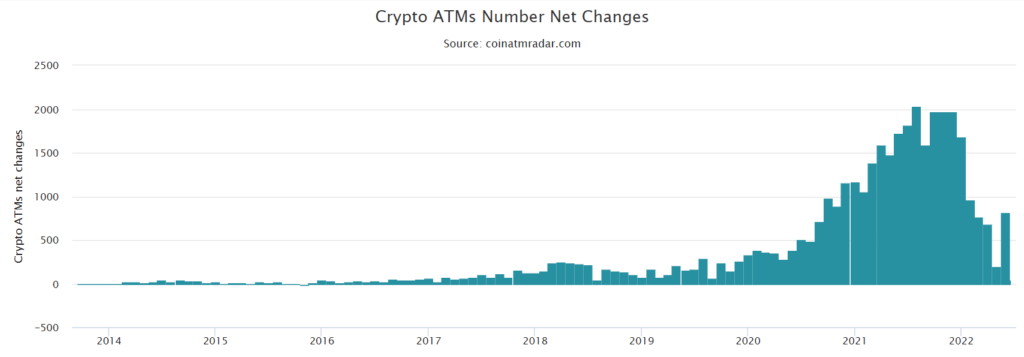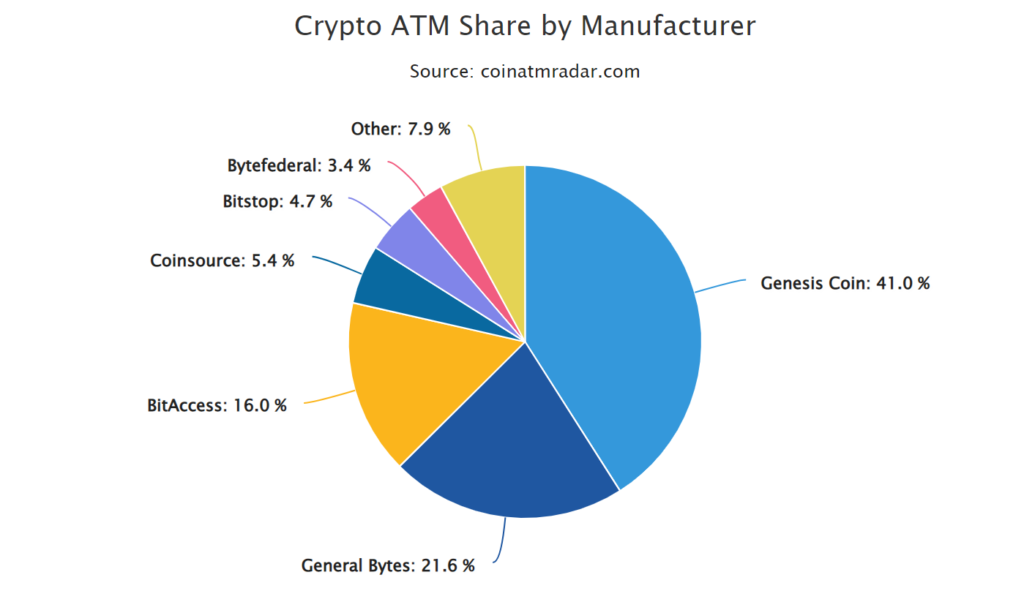Advertisement
The global installation of Bitcoin (BTC) ATMs saw a sharp decline in May 2022, the biggest drop since 2019.
The number of Bitcoin ATM installations has dropped sharply in the first 5 months of the year.
In the first 5 months of 2022, the number of Bitcoin ATM installs continuously decreased sharply, down 89.75% compared to the number of new installations in December 2021. In May, only 202 BTC ATMs were installed. Some of the main factors leading to the decline in ATM installations are the tense political situation around the world, unclear or anti-crypto regulations, market saturation, and the impact of the coronavirus pandemic on the economy.

The number of Bitcoin ATM installations increased rapidly in early June
However, data from Coin ATM Radar shows a sharp increase in the number of installations as 817 Bitcoin ATMs around the world were installed in just the first five days of June.
Coin ATM Radar data records that the United States accounts for 87.9% of the 37,826 cryptocurrency ATMs worldwide. In addition, Europe has a network of 1,419 ATMs – accounting for 3.8% of the total number of ATMs worldwide.

, genesis coin manufacturer maintains its leading position, accounting for 41% of all active Bitcoin ATMs globally. Other manufacturers with significant market share include General Bytes (21.6%), BitAccess (16%), Coinsource (5.4%) and Bitstop (4.7%).
While real-world challenges may have a temporary impact on bitcoin's physical expansion through ATMs, at its core, the Bitcoin network continues to outperform previous records in security, decentralization, and Peer-to-Peer (P2P) network acceleration.

data from Bitcoin Visuals, Bitcoin Lightning Network (LN) capacity has reached an all-time high of 3915,776 BTC – further improving BTC transaction speed and reducing fees compared to the Class 2 protocol. Bitcoin LN was first deployed to the main Bitcoin network in 2018 to address the well-known problems of Bitcoin's scalability.
















